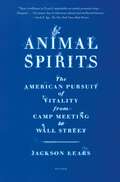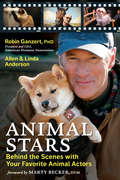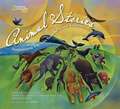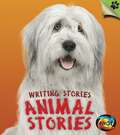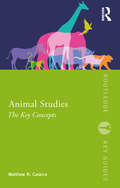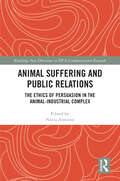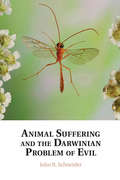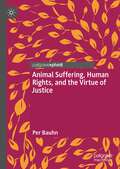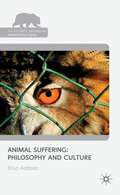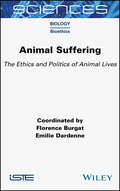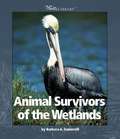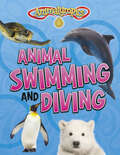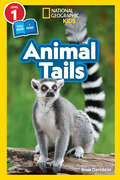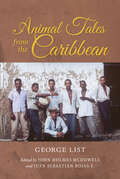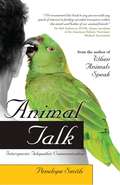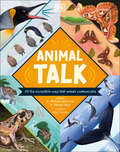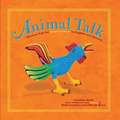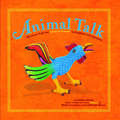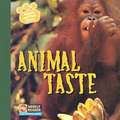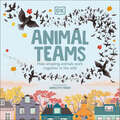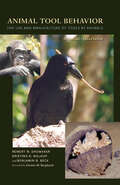- Table View
- List View
Animal Spirits: The American Pursuit of Vitality from Camp Meeting to Wall Street
by Jackson Lears“[A] master class in American cultural and intellectual history.” —Sarah E. Igo, The New York Times Book Review“Jackson Lears is the preeminent cultural historian of the American empire. This book is another masterpiece in his magisterial corpus.” —Cornel WestOne of Wired's best books of 2023A master historian’s retrieval of the spiritual visions and vitalisms that animate American life and the possibilities they offer today.In Animal Spirits, the distinguished historian Jackson Lears explores an alternative American cultural history by tracking the thinkers who championed the individual’s spontaneous energies and the idea of a living universe against the strictures of conventional religion, business, and politics. From Puritan times to today, Lears traces ideas and fads such as hypnosis and faith healing from the pulpit and stock exchange to the streets and the betting table. We meet the great prophets of American vitality, from Walt Whitman and William James to Andrew Jackson Davis (the “Poughkeepsie Seer”) and the “New Thought” pioneer Helen Wilmans, who spoke of the “god within—rendering us diseaseless incarnations of the great I Am."Well before John Maynard Keynes stressed the reliance of capitalism on investors’ “animal spirits,” these vernacular vitalists established an American religion of embodied mind that also suited the needs of the marketplace. In the twentieth century, the vitalist impulse would be enlisted in projects of violent and racially charged national regeneration by Theodore Roosevelt and his legatees, even as African American writers confronted the paradoxes of primitivism and the 1960s counterculture imagined new ways of inspiriting the universe. Today, scientists are rediscovering the best features of the vitalist tradition—permitting us to reclaim the role of chance and spontaneity in the conduct of our lives and our understanding of the cosmos.Includes 8 pages of black-and-white images
Animal Stars
by Allen Anderson Robin GanzertWhen cameras roll and directors call, "Action," some of the most dependable, funniest, and most enthusiastic actors stand poised on four legs, with ears alert. From Joey in War Horse to the wolves in Game of Thrones, what we see on screen is the result of meticulous preparation and professional teamwork. The eye-popping, heartwarming stories in these pages reveal the trainers, actors, directors, and, of course, dogs, cats, horses, penguins, deer, and other animals in all their behind-the-scenes glory. You'll discover that some animal actors have diva tendencies and others have rags-to-riches backstories. American Humane Association certified animal safety representatives work carefully to ensure that no animals are harmed, as they have been doing for decades. Animal stars have done it all -- convinced us to eat more tacos, broken our hearts in war dramas, inspired us with enduring love and loyalty, kept us at the edge of our seats as they snarled in the shadows, mirrored human antics to make us roar with laughter, and, like Uggie (from The Artist), stolen the show on the red carpet. Who besides a monkey named Crystal could impress a brilliant comedian like Robin Williams in Night at the Museum? And animal stars will work for food, including only KFC original recipe for Casey the bear -- no other fried chicken will do! These charming and sometimes hilarious stories will give you a new appreciation for the skill and patience it takes to teach nonhuman actors to perform on camera. Training tips from the pros and personal recollections of celebrities such as Julia Roberts, Hailee Steinfeld, and Steven Spielberg make this insider's look at the lives and work of these incomparable stars as irresistible as the animals themselves. A portion of the publisher's proceeds from this book will aid American Humane Association.
Animal Stories: Heartwarming True Tales from the Animal Kingdom
by Jane Yolen Adam Stemple Jui Ishida National Geographic Kids Staff Jason StempleAmazing animal stories that span the centuries come to life in this beautifully written and illustrated book. Some are sweet, some funny, some surprising, but all are emotionally powerful - the Capitolene geese who saved the Roman empire, Balto the Alaskan sled dog, Smoky the Bear, the passenger pigeon of WWI Cher Ami, and the latest internet sensation Christian the lion. A collection such as this comes along only once in a generation, full of heart-warming tales that families will read, re-read, and remember.
Animal Stories: Writing Stories (Writing Stories Ser.)
by Anita GaneriThis book introduces readers to writing stories that revolve around animals and is a perfect resource for meeting Common Core State Standards in writing. Readers are shown how animals can be used in stories and readers are guided through the process of writing their own story. Top tips are given covering planning, writing dialogue, developing characters, adding narrative plot twists, using descriptive language and more! Engaging photographs, eye-catching illustrations, and a wealth of ideas bring the topic to life. An animal story running throughout the book draws readers in, offers concrete examples of how the tips can be put into practice and will inspire readers to get writing their own animal stories.
Animal Studies: The Key Concepts (Routledge Key Guides)
by Matthew R. CalarcoPrefaced with a brief introduction to the field of animal studies, the text explores the key influential terms, topics and debates which have had a major impact on the field, and that students are most likely to encounter in their animal studies classes. Animal Studies provides a guide to key concepts in the burgeoning interdisciplinary field of animal studies, laid out in A-Z format. While Human–Animal Studies and Critical Animal Studies are the main frameworks that inform the bulk of the writings in animal studies and the key concepts discussed in the volume, other approaches such as anthrozoology and cognitive ethology are also explored. The entries in the volume attend to the differences in ongoing debates among scholars and activists, showing that what is commonly called “animal studies” is far from a unified body of work. A full bibliography of sources is included at the end of the book, along with an extensive index. The book will be a valuable guide to undergraduate and postgraduate students in geography, philosophy, sociology, anthropology, women’s studies, and other related disciplines. Seasoned researchers will find the book helpful, when researching topics outside of their specialization. Outside of academia, it will be of interest to activists, as well as professional organizations.
Animal Suffering and Public Relations: The Ethics of Persuasion in the Animal-Industrial Complex (Routledge New Directions in PR & Communication Research)
by Núria AlmironAnimal Suffering and Public Relations conducts an ethical assessment of public relations, mainly persuasive communication and lobbying, as deployed by some of the main businesses involved in the animal industrial complex – the industries participating in the systematic and institutionalized exploitation of animals. Society has been experiencing a growing ethical concern regarding humans’ (ab)use of other animals. This is a trend first promoted by the development of animal ethics – which claims any sentient being, because of sentience, deserves moral consideration – and more recently by other approaches from the social sciences, including critical animal studies. In this volume, we aim to start an entirely unaddressed discussion within the field of public relations: the need to problematize the ethics of persuasion when nonhuman animal suffering is involved, particularly the impact of persuasion and lobbying on compassion towards other animals in the cases of food, experimentation, entertainment and environment management. The books provides an interdisciplinary, theoretical discussion illustrated with international case studies from experts in strategic communication, public relations, lobbying and advocacy, animal ethics, philosophy of law, political philosophy and social psychology. This unique book merges the fields of critical public relations, animal ethics and critical animal studies and will be of direct appeal to a wide range of researchers, academics and doctoral students across related fields.
Animal Suffering and Public Relations: The Ethics of Persuasion in the Animal-Industrial Complex (Routledge New Directions in PR & Communication Research)
by Núria AlmironAnimal Suffering and Public Relations conducts an ethical assessment of public relations, mainly persuasive communication and lobbying, as deployed by some of the main businesses involved in the animal-industrial complex—the industries participating in the systematic and institutionalised exploitation of animals.Society has been experiencing a growing ethical concern regarding humans’ (ab)use of other animals. This is a trend first promoted by the development of animal ethics—which claims any sentient being, because of sentience, deserves moral consideration—and more recently by other approaches from the social sciences, including critical animal studies. In this volume, we aim to start an entirely unaddressed discussion within the field of public relations: The need to problematise the ethics of persuasion when nonhuman animal suffering is involved, particularly the impact of persuasion and lobbying on compassion towards other animals in the cases of food, experimentation, entertainment, and environmental management. This book provides an interdisciplinary, theoretical discussion illustrated with international case studies from experts in strategic communication, public relations, lobbying and advocacy, animal ethics, philosophy of law, political philosophy, and social psychology.This unique book merges the fields of critical public relations, animal ethics, and critical animal studies and will be of direct appeal to a wide range of researchers, academics, and doctoral students across related fields.
Animal Suffering and the Darwinian Problem of Evil
by John R. SchneiderJohn R. Schneider explores the problem that animal suffering, caused by the inherent nature of Darwinian evolution, poses to belief in theism. Examining the aesthetic aspects of this moral problem, Schneider focuses on the three prevailing approaches to it: that the Fall caused animal suffering in nature (Lapsarian Theodicy), that Darwinian evolution was the only way for God to create an acceptably good and valuable world (Only-Way Theodicy), and that evolution is the source of major, God-justifying beauty (Aesthetic Theodicy). He also uses canonical texts and doctrines from Judaism and Christianity - notably the book of Job, and the doctrines of the incarnation, atonement, and resurrection - to build on insights taken from the non-lapsarian alternative approaches. Schneider thus constructs an original, God-justifying account of God and the evolutionary suffering of animals. His book enables readers to see that the Darwinian configuration of animal suffering unveiled by scientists is not as implausible on Christian theism as commonly supposed.
Animal Suffering, Human Rights, and the Virtue of Justice
by Per BauhnIn this book, Per Bauhn does three things. First, he outlines some aspects of contemporary philosophical views on animals and morality, including the criticism of speciesism and the animal rights argument. Second, he criticizes these views, arguing that we cannot escape a speciesist perspective on morality, and that there are no good reasons why we should believe that non-human animals have moral rights. Third, he argues that cruelty against non-human animals is morally wrong, but not because animal rights are being violated but because human agents who inflict cruelty on non-human animals are failing their duty to develop in themselves the virtue of justice. This latter argument is reminiscent of Immanuel Kant’s idea that we have only indirect duties towards animals, but unlike that idea, Bauhn's argument does not depend on any causal hypothesis that humans who are cruel to animals are likely to be cruel also to their fellow humans. Instead, Bauhn's argument relies on the fact that being cruel to non-human animals and other innocent beings is conceptually and logically inconsistent with the virtue of justice – a virtue which agents are rationally required to develop in themselves.
Animal Suffering: Philosophy and Culture
by Elisa AaltolaExploring how animal suffering is made meaningful within Western ramifications, the book investigates themes such as skepticism concerning non-human experience, cultural roots of compassion, and contemporary approaches to animal ethics. At its center is the pivotal question: What is the moral significance of animal suffering?
Animal Suffering: The Ethics and Politics of Animal Lives
by Florence Burgat Emilie DardenneThis interdisciplinary volume deals with the most painful situations encountered by animals in the wild or under human guardianship. It seeks to illustrate some remarkable cases and present a general picture of the commodification of animals. This volume starts with an exploration of the capture of animals intended for European zoological parks, the treatment of animals in South Korea, pig farming in China and animal testing in Europe. It goes on to explore animal politics, with a focus on Europe. The moral problems posed by the different types of harm caused to animals are then approached from the vantage point of moral philosophy. Finally, the points of view of veterinary sciences and applied ethics related to animal emotions, suffering and death complete the picture.
Animal Survivors Of The Wetlands (Watts Library)
by Barbara A. SomervillThe American alligator, the brown pelican, and the whooping crane are some of the animals that make the wetlands their home and have faced extinction. Over the years, the existence of these animals has been threatened by hunting, pollution, pesticides, and habitat destruction. This book explores the efforts being made to help these animals survive and thrive. Book jacket.
Animal Swimming and Diving (Animalympics Ser.)
by Isabel ThomasScience; Biology; athletic animals; swimming animals; animals; water; diving; underwater
Animal Tails (Fountas & Pinnell Classroom, Guided Reading)
by Mary LindeenNIMAC-sourced textbook. Tails. Which animals have tails? How are tails the same? How are they different?
Animal Tails (National Geographic Kids Readers, Level 1/Co-Reader)
by Rose DavidsonDo you know why peacocks fan out their colorful fancy feathers, or how opposums hang upside-down from trees? Whether to seek attention, keep their balance, or move from place to place, animals have tails for a lot of different reasons.Discover flat tails, curly tails, strong tails, and colorful tails of all kinds in this National Geographic Kids Co-reader. Learn all about why animals--from monkeys to opposums to ring-tailed lemurs--have tails and how they use them.National Geographic Kids readers have been a hit in the beginning reader category, and this book builds upon that success with a new approach--parents and children reading together. With the same combination of careful text, brilliant photographs, and fun approach to high-interest subjects that has proved to be a winning formula with kids, National Geographic co-readers provide one page of adult read-aloud text and one page of kid read-aloud text on each spread, building toward a collaborative reading experience.
Animal Tales from the Caribbean (Special Publications of the Folklore Institute, Indiana University)
by George List John Holmes McDowell Juan Sebastián Rojas E.These twenty-one animal tales from the Colombian Caribbean coast represent a sampling of the traditional stories that are told during all-night funerary wakes. The tales are told in the semi-sacred space of the patio (backyard) of homes as part of the funerary ritual that includes other aesthetic and expressive practices such as jokes, song games, board games, and prayer. In this volume these stories are situated within their performance contexts and represent a highly ritualized corpus of oral knowledge that for centuries has been preserved and cultivated by African-descendant populations in the Americas. Ethnomusicologist George List collected these tales throughout his decades-long fieldwork amongst the rural costeños, a chiefly African-descendent population, in the mid-20th century and, with the help of a research team, transcribed and translated them into English before his death in 2008. In this volume, John Holmes McDowell and Juan Sebastián Rojas E. have worked to bring this previously unpublished manuscript to light, providing commentary on the transcriptions and translations, additional cultural context through a new introduction, and further typological and cultural analysis by Hasan M. El-Shamy. Supplementing the transcribed and translated texts are links to the original Spanish recordings of the stories, allowing readers to follow along and experience the traditional telling of the tales for themselves.
Animal Talk
by Penelope SmithThree decades ago, Penelope Smith fi rst presented Animal Talk and her effective telepathic communication techniques that can dramatically transform your relationships with your animal companions. Rereleased by popular demand, Smith once again shares her insightful wisdom and illuminates topics such as freedom, control, obedience, behavior, and relationships between animals. Animal Talk teaches you how to open the door to your animal friends' hearts and minds without resorting to magic tricks or wishful thinking. Every creature can be reached through telepathic communication -- from your tabby cat or cockatiel to the wasps that build nests in the eaves of your home or even the common flea -- you just have to be open to the idea, and mind-to-mind communication will be in your grasp.
Animal Talk: All the Incredible Ways that Animals Communicate (Wonders of Wildlife )
by Dr Michael Leach Meriel LlandThis animal book explores the many clever and creative ways animals communicate with each other, from head-turning howls to jaw-dropping dances.For many animals, communicating is as important to their life chances as finding food and water. Animal Talk is a brilliant introduction to ingenious communication strategies in the natural world.Whether it's releasing a cloud of ink to confuse, roaring to intimidate, dancing to attract a mate or howling to locate one another, the range of messaging methods in the natural world is quite astonishing (and sometimes quite disgusting!). Perfect for children aged 7–9, the animal book is filled with intriguing illustrations and spectacular photographs of the amazing, obscure, and unusual. You'll never look at nature the same way again!This captivating animal book for children offers: - A fascinating array of animal communications from a wide variety of different species for children aged 7-9.- Expertly written text and accompanying images to clearly explain each animal communication.- Several sections which break down different animal themes, such as sounds, scents, and signals to make the content easy to understand.- Incredible facts about how animals communicate – including how elephants communicate over huge distances by listening through the soles of their feet, how whales communicate through song, and more.Meet birds and spiders who dance to attract a mate, vultures that are sick on their own food to put off other animals, lions who roar at rival prides to test out their strength, and many more. Animal Talk is a must-have for the animal-obsessed, as well as making an interesting resource for school and libraries. At DK, we believe in the power of discovery. So why not complete the collection?If you liked Animal Talk and finding out about the creative ways that animals communicate with each other, why not check out the other intriguing animal title in the series? How Not To Get Eaten is a book about the many clever ways animals protect themselves from predators in the wild!
Animal Talk: Mexican Folk Art Animal Sounds in English and Spanish (First Concepts in Mexican Folk Art)
by Cynthia WeillDid you know that animals that live in one country don't always talk the same language as animals from somewhere else? Take a rooster, for instance. In English-speaking countries, he says cock-a-doodle-doo when he has a notion to announce himself or to greet the dawn. But in Spanish-speaking countries, he says ki-kiri-ki. Emerging readers will delight in identifying the animals depicted on each new page. And the bilingual text invites parent and child into an interactive and playful reading experience for acting out animal sounds in English and Spanish. <p>Craftsman Rubí Fuentes and Efraín Broa from the Mexican state of Oaxaca fill the pages of Animal Talk with vibrant, wildly imaginative figures of familiar animals. Animal Talk is the fifth book in Cynthia Weill's charming First Concepts in Mexican Folk Art series. It is her passion to promote the work of artisans from around the world through early concept books.
Animal Talk: Mexican Folk Art Animal Sounds in English and Spanish (First Concepts in Mexican Folk Art)
by Cynthia WeillFrom Oaxaca, Mexico, come vibrant wood carvings of animals that invite children to learn animal sounds in English and Spanish. Desde Oaxaca, México, vienen vibrantes tallados en madera de animales que invitan a los niños a aprender los sonidos de los animales en inglés y español.Did you know that animal noises can sound different in different languages? A goat greets you with "meh, meh" in English and "bee bee" in Spanish. And in English a rooster calls out "cock-a-doodle-doo" to greet the dawn, while a rooster loudly crows "ki-kiri-ki" in Spanish. Young readers will delight in identifying the fifteen imaginative figures of familiar animals in this charming bilingual book, while the text invites children to imitate animal sounds in English and Spanish. This is the perfect book for an interactive and playful beginning reading experience. ¿Sabías que los ruidos de los animales pueden sonar diferentes en diferentes idiomas? Una cabra te saluda con "meh, meh" en inglés y "bee bee" en español. Y en inglés, un gallo grita "cock-a-doodle-doo" para saludar al amanecer, mientras que un gallo canta en voz alta "ki-kiri-ki" en español. Los lectores jóvenes se deleitarán al identificar las quince imaginativas figuras de animales familiares en este encantador libro bilingüe, mientras que el texto invita a los niños a imitar los sonidos de los animales en inglés y español. Este es el libro perfecto para una experiencia de lectura inicial interactiva y lúdica.
Animal Teams: How Amazing Animals Work Together in the Wild
by Charlotte MilnerThis non-fiction children&’s book explains how animals work together to survive and thrive in the wild. It teaches children how important teamwork is, no matter how big or small a creature you are.Charlotte Milner's stunning illustrations blend with photographs to create engaging animal scenes that children will love to pore over again and again.Discover why teamwork is so important for different groups of animals in the wild. Inside this animal book for children, you&’ll find: • A stunning picture book that introduces children to a range of different animal groups, including a pack of wolves, flock of birds and school of fish • A range of habitats, including mountains, coral reefs and the Amazon rainforest • Stunning illustrations by award-winning author and illustrator Charlotte Milner, who wrote and illustrated The Bee Book series • Engaging text introduces children to different types of animal groups and how they work together in the wild Have you ever asked why birds swoop and soar in a flock? Or wondered where an army of ants is marching? This beautiful animal book takes young readers through a range of habitats, from snowy mountains to colorful coral reefs, to discover different groups of animals and how they work together to survive in their environments. Children will learn fascinating fun facts along the way. For example, did you know that a group of monkeys is called a troop? Or that flying in flocks means birds can sleep as they fly? Combined with gentle learning and simple, lyrical text, Animal Teams is perfect for reading aloud which presents many early learning benefits including language development.This exquisite children&’s educational book is unique in its ability to educate little ones about the animal kingdom while also teaching them about the importance of teamwork in their own lives.
Animal Teeth and Human Tools
by Christy G. Turner II Nicolai D. Ovodov Olga V. Pavlova Christy G. Turner II Nicolai D. OvodovThe culmination of more than a decade of fieldwork and related study, this unique book uses analyses of perimortem taphonomy in Ice Age Siberia to propose a new hypothesis for the peopling of the New World. The authors present evidence based on examinations of more than 9000 pieces of human and carnivore bone from 30 late Pleistocene archaeological and palaeontological sites, including cave and open locations, which span more than 2000 miles from the Ob River in the West to the Sea of Japan in the East. The observed bone damage signatures suggest that the conventional prehistory of Siberia needs revision and, in particular, that cave hyenas had a significant influence on the lives of Ice Age Siberians. The findings are supported by more than 250 photographs, which illustrate the bone damage described and provide a valuable insight into the context and landscape of the fieldwork for those unfamiliar with Siberia.
Animal Tool Behavior: The Use and Manufacture of Tools by Animals
by Benjamin B. Beck Robert W. Shumaker Kristina R. WalkupWhen published in 1980, Benjamin B. Beck’s Animal Tool Behavior was the first volume to catalog and analyze the complete literature on tool use and manufacture in non-human animals. Beck showed that animals—from insects to primates—employed different types of tools to solve numerous problems. His work inspired and energized legions of researchers to study the use of tools by a wide variety of species.In this revised and updated edition of the landmark publication, Robert W. Shumaker and Kristina R. Walkup join Beck to reveal the current state of knowledge regarding animal tool behavior. Through a comprehensive synthesis of the studies produced through 2010, the authors provide an updated and exact definition of tool use, identify new modes of use that have emerged in the literature, examine all forms of tool manufacture, and address common myths about non-human tool use. Specific examples involving invertebrates, birds, fish, and mammals describe the differing levels of sophistication of tool use exhibited by animals.
